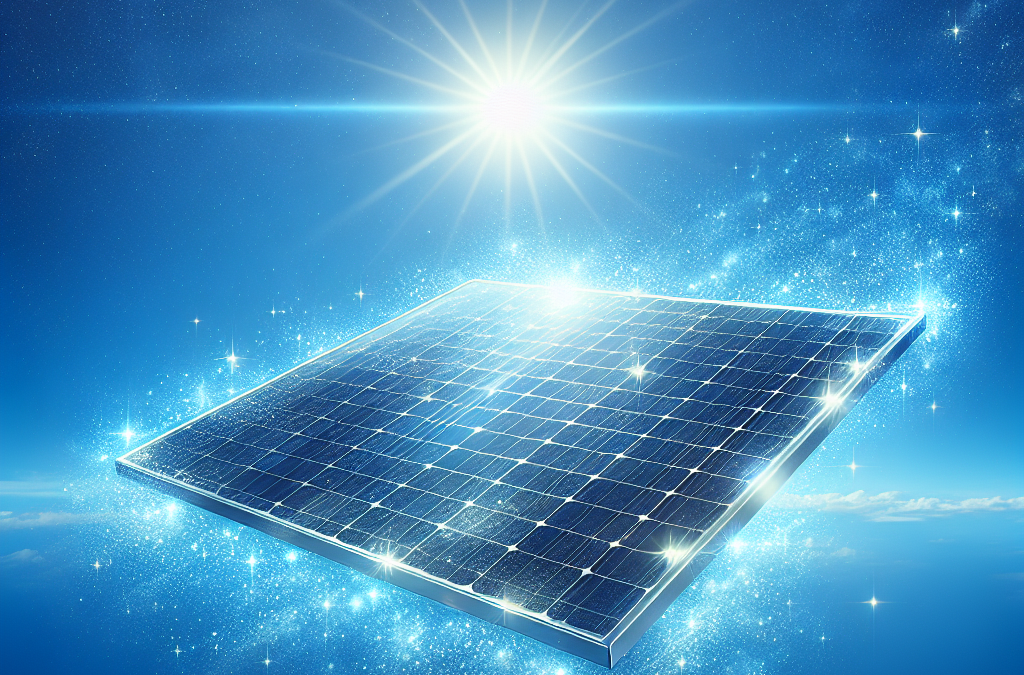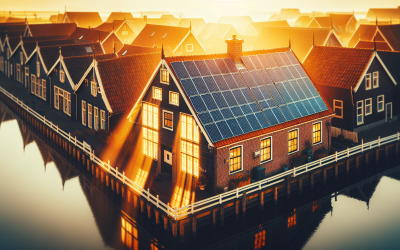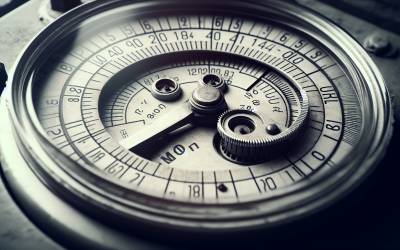So you’ve finally made the smart decision to invest in solar panels for your home. But now you’re wondering, do I need to clean these things regularly? After all, they’re up there on your roof, exposed to the elements day in and day out. In this article, we’ll explore the importance of regular solar panel maintenance and whether or not cleaning them is necessary for optimal energy production. Stick around to find out if you need to climb up there with a bucket and sponge, or if Mother Nature will take care of it for you.
The Importance of Cleaning Solar Panels
Solar panels are a significant investment in renewable energy and can provide many benefits, such as reducing dependence on fossil fuels and lowering electricity bills. However, to ensure that your solar panels perform optimally and maximize their efficiency, regular cleaning is essential. Cleaning your solar panels not only helps in preventing damage but also increases their lifespan. In this article, we will explore the significance of cleaning solar panels and discuss various factors affecting dirt accumulation, the effect of dirt on panel performance, different cleaning methods, best practices, DIY vs professional cleaning, monitoring for cleaning needs, potential risks, and cleaning in different climates. So, let’s dive in!
Factors Affecting Solar Panel Dirt Accumulation
Several factors contribute to the accumulation of dirt on solar panels, hampering their efficiency. Understanding these factors can help us adopt proactive measures to keep our solar panels clean.
Dust and Pollen
Dust and pollen particles carried by wind are the most common culprits responsible for dirty solar panels. These microparticles settle on the panels’ surface, forming a layer that obstructs sunlight absorption and compromises their performance.
Bird Droppings
Bird droppings can not only be unsightly but also negatively impact solar panel efficiency. The acidic nature of bird droppings can corrode the protective layers of the panels, leading to potential damage if left uncleaned.
Leaves and Debris
If your solar panels are surrounded by trees or foliage, leaves and other debris can accumulate on their surface, hindering their ability to absorb sunlight effectively. Regular cleaning is necessary to prevent the buildup of these materials.
Air Pollution
In areas with high levels of air pollution, such as industrial zones or busy cities, soot and other pollutants in the air can settle on the surface of solar panels. Over time, this accumulation can reduce the panels’ ability to capture sunlight and generate electricity at their full capacity.
Rainfall Frequency
Contrary to popular belief, rain does not effectively clean solar panels by itself. While it may wash away loose dirt and debris, a consistent downpour is required to remove stubborn dirt, leaving residues that can still impact their efficiency. Regular cleaning is still necessary despite the occasional rainfall.
Effect of Dirt on Solar Panel Performance
Now that we understand the factors contributing to dirt accumulation on solar panels, let’s explore the impact of dirt on their performance.
Shading and Reduced Sunlight
The layer of dirt and debris on solar panels acts as a barrier, shading the cells from direct sunlight. This shading effect reduces the amount of sunlight reaching the panels’ surface, leading to a decline in power generation. The more dirt that accumulates, the greater the shading effect, resulting in reduced overall efficiency.
Decreased Energy Production
Dirt accumulation on solar panels directly translates into decreased energy production. The obstructed surface area limits the panels’ ability to convert sunlight into electricity, leading to reduced energy output. Keeping the panels clean can prevent this decline in performance and ensure maximum energy production.
Potential Hot Spots
Another adverse effect of dirt buildup is the potential formation of hot spots on solar panels. Hot spots occur when a portion of the panel’s surface is shaded or covered, causing uneven heating. This localized heating can damage the panels and shorten their lifespan. Regular cleaning eliminates the risks of hot spots, protecting the longevity of your solar panel system.
Types of Solar Panel Cleaning Methods
To maintain the optimal performance of your solar panels, it’s crucial to employ the right cleaning methods. Let’s explore the various options available:
Manual Cleaning
The most traditional method of cleaning solar panels is manual cleaning. This method involves using a hose, soft cloth, sponge, or a squeegee to remove dirt and debris. It is a cost-effective option and allows you to have direct control over the cleaning process.
Automated Cleaning Systems
Automated cleaning systems utilize motorized brushes, rollers, or wipers to clean the solar panels automatically. These systems are designed to move across the panels, removing dirt and debris. They are efficient and save time, especially for larger solar panel installations.
Waterless Cleaning
Waterless cleaning methods involve the use of specialized cleaning solutions or sprays that are applied to the panels’ surface. These solutions help break down dirt and grime, allowing them to be wiped away easily without the need for water. Waterless cleaning methods are ideal for areas with water scarcity or during freezing temperatures when water-based cleaning is not possible.
Robotic Cleaners
Robotic cleaners are a relatively new and advanced technology in solar panel cleaning. These autonomous robots are designed to move across the solar panels, utilizing brushes and other cleaning mechanisms to remove dirt. Robotic cleaners are efficient, save time and labor, and can navigate complex setups.
Best Practices for Cleaning Solar Panels
Adopting best practices for cleaning solar panels is essential to ensure effective and safe cleaning. Here are some guidelines to follow:
Timing and Frequency
Regular cleaning is crucial for maintaining optimal solar panel performance. However, the frequency of cleaning may vary based on the environmental factors and geographical location. In general, it is recommended to clean solar panels every three to six months. However, if you notice a significant decline in performance or excessive dirt accumulation, consider increasing the cleaning frequency.
Safety Precautions
Before beginning any cleaning activity, it is important to prioritize safety. Ensure that the solar panels are not energized or exposed to sunlight while cleaning. Use appropriate personal protective equipment (PPE) such as gloves and safety goggles to prevent any injuries. If the panels are installed on a roof, use proper safety harnesses and never work alone.
Tools and Equipment
Depending on the cleaning method you choose, ensure you have the necessary tools and equipment. This may include soft brushes, a squeegee, microfiber cloths, water hoses, and non-abrasive cleaning solutions. Avoid using harsh chemicals or abrasive materials that can scratch or damage the panels’ surface.
Proper Cleaning Technique
When manually cleaning, start by rinsing the panels with water to remove loose dirt and debris. Use a soft brush or sponge with a gentle cleaning solution to scrub the surface, focusing on stubborn spots. Rinse the panels thoroughly with clean water after cleaning, ensuring no residue is left behind.
Avoiding Abrasive Materials
To prevent damage, avoid using abrasive materials such as rough brushes, steel wool, or abrasive cleaners. These materials can scratch the panels’ surface and reduce their efficiency. Stick to soft brushes or sponges specifically designed for solar panel cleaning.
Ensuring Optimal Rinse
After cleaning, it is crucial to rinse the panels thoroughly. Any remaining cleaning solution or residue can hinder the solar panels’ performance and create streaks or deposits. Use clean water and ensure all cleaning agents are completely rinsed off.
Professional Cleaning Services
If you are unsure about cleaning your solar panels yourself or if they are difficult to access, consider hiring professional cleaning services. Professional cleaners have the expertise, tools, and safety measures necessary to clean your panels effectively and efficiently. They can also help identify any potential issues or damages that may require attention.
DIY vs. Professional Cleaning
The decision to clean your solar panels yourself or hire professionals depends on various factors. Let’s explore the considerations for both options:
Cost Considerations
Cleaning your solar panels yourself can save money, especially if you already have the necessary tools and equipment. However, professional cleaning services may offer competitive pricing or package deals, making their services affordable and worthwhile.
Safety and Expertise
While manual cleaning is relatively simple and safe, some solar panel installations may be challenging to access, such as rooftop panels or larger arrays. In these cases, professionals with proper safety training and equipment are better equipped to handle the cleaning process without risking injuries or damage to the panels.
Warranty Implications
Before deciding to clean the panels yourself, review the warranty terms and conditions provided by the manufacturer or installer. Some warranties may require professional cleaning to maintain the validity of the warranty. It is important to weigh the cost of professional cleaning against the potential risks of voiding the warranty.
Monitoring Solar Panels for Cleaning Needs
Regular monitoring of your solar panels is essential to identify when they require cleaning. Here are some methods to keep track of their cleanliness:
Visual Inspection
Perform a visual inspection of your solar panels regularly. Look for any visible signs of dirt, debris, or discoloration on the surface. If you notice a significant amount of dirt or a decline in performance, it may be an indication that cleaning is necessary.
Performance Monitoring
Monitor the energy production of your solar panels over time. If you notice a gradual decrease in energy output, it could be a result of dirt buildup. Comparing your panels’ performance to their expected output can help identify when cleaning is needed.
Environmental Factors
Take into account the environmental factors that promote the accumulation of dirt on your solar panels. If you live in an area with high pollution levels, frequent bird activity, or surrounded by trees, you may need to clean your panels more frequently.
Maintenance Logs
Keep a maintenance log to record the dates and details of your solar panel cleaning activities. This log can help you track the cleaning frequency and identify any patterns or issues that may arise over time.
Potential Risks of Improper Cleaning
While regular cleaning is essential for maintaining the performance of your solar panels, improper cleaning techniques or neglecting safety precautions can pose several risks:
Mechanical Damage
Using abrasive materials or rough cleaning techniques can scratch or damage the surface of the solar panels. These damages can impair the panels’ light absorption capability and ultimately reduce their efficiency.
Electrical Hazards
Working with wet panels or in wet conditions without proper safety precautions can result in electrical shocks or other electrical hazards. It is crucial to ensure that the panels are de-energized before attempting any cleaning and to wear appropriate personal protective equipment.
Water Damage
Excessive use of water or leaving the panels wet after cleaning can potentially cause water damage. Water seepage into the electrical components of the panels can lead to malfunctioning or permanent damage. Always ensure proper drying after cleaning to avoid such risks.
Voiding Warranty
Neglecting manufacturer or installer guidelines for cleaning procedures and frequency can result in voiding the warranty. Before undertaking any cleaning activities, familiarize yourself with the warranty terms and conditions to avoid any potential issues.
Cleaning Solar Panels in Different Climates
The cleaning requirements for solar panels may vary depending on the climate in which they are installed. Let’s explore the considerations for cleaning solar panels in different climates:
Hot and Dry Climates
In hot and dry climates, dust accumulation on solar panels can be significant. Regular cleaning is necessary to remove the dust and maintain optimal performance. Waterless cleaning methods may be more suitable in these climates, considering water scarcity.
Humid and Tropical Climates
Humid and tropical climates are prone to high levels of rainfall, which can help keep solar panels relatively clean. However, periodic cleaning is still necessary to remove dirt and debris that may not be fully washed away by rain.
Cold and Snowy Climates
In cold and snowy climates, cleaning solar panels can be challenging, primarily due to the risk of freezing water. Solar panels should be cleaned before the onset of winter to prevent a thick layer of snow from obstructing sunlight absorption. Specialized snow removal tools and techniques may be required to clean panels during winter months.
Conclusion
Regularly cleaning your solar panels is of utmost importance to maximize their efficiency, prevent damage, and increase their lifespan. From understanding the factors that contribute to dirt accumulation to exploring various cleaning methods, best practices, and monitoring techniques, this article provides comprehensive insights into keeping your solar panels clean. Whether you choose to clean them yourself or hire professionals, remember to prioritize safety and adhere to manufacturer guidelines. By adopting proper cleaning techniques and regularly monitoring your solar panels, you can ensure their optimal performance and enjoy the full benefits of renewable energy for years to come.









